Nothing establishes a mood like texture; something soft and fluffy, something bright and shiny. Touch something stiff or something easy to bend, each can attract your interest, perhaps affect your mood. And your garden certainly creates a mood, water running, tall waving grass, thorns that make us cautious, snapdragons make us want to play.
By thoughtfully combining diverse garden textures, you’ll not only enhance your garden’s visual appeal but also create an engaging environment that changes throughout the day and seasons. Each texture can evoke a different mood and feel, inviting you and your visitors to take a closer look.
Improving your garden with a variety of plant textures will create dynamic contrast and depth that invite exploration by both eye and touch. The interplay between soft, feathery ferns, bold, sculptural succulents, and flowing ornamental grasses can transform your yard into a living tapestry that feels both curated and natural. I will include some ideas to help you make the most out of texture in your garden:
The Benefits of Texture in the Garden
Using a variety of plant textures in your garden offers a host of benefits that elevate both the aesthetics and the ecosystem of your outdoor space. Here are some key advantages:
1. Enhanced Visual Interest and Depth
Elephant Ears and Ferns
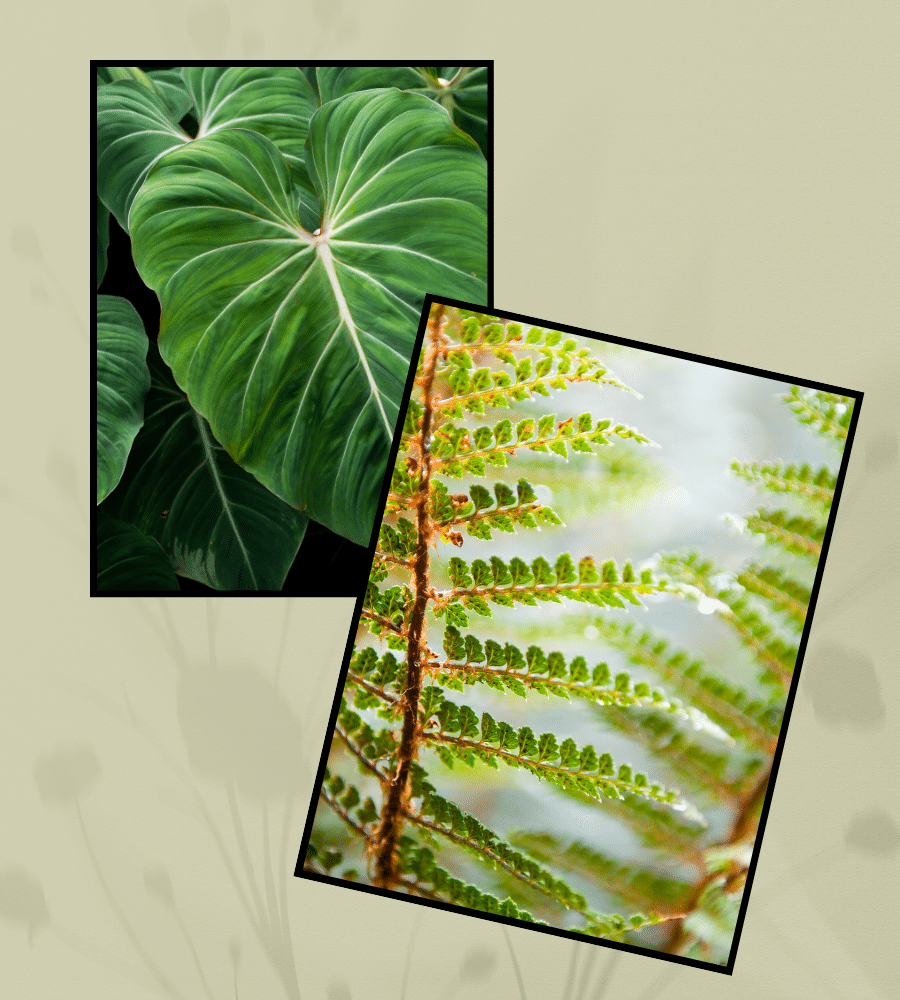
Contrasting texture in your foliage plants will catch your eye and hold your interest. Here we see an enormous elephant ear matched with a sharp and detailed fern. The large leaves are easiest to get from tropical plants. However you can lift and save elephant ears over the winter and ferns are available to you in any climate.
2. A Garden to Please the Senses
Cacti and Philodendron
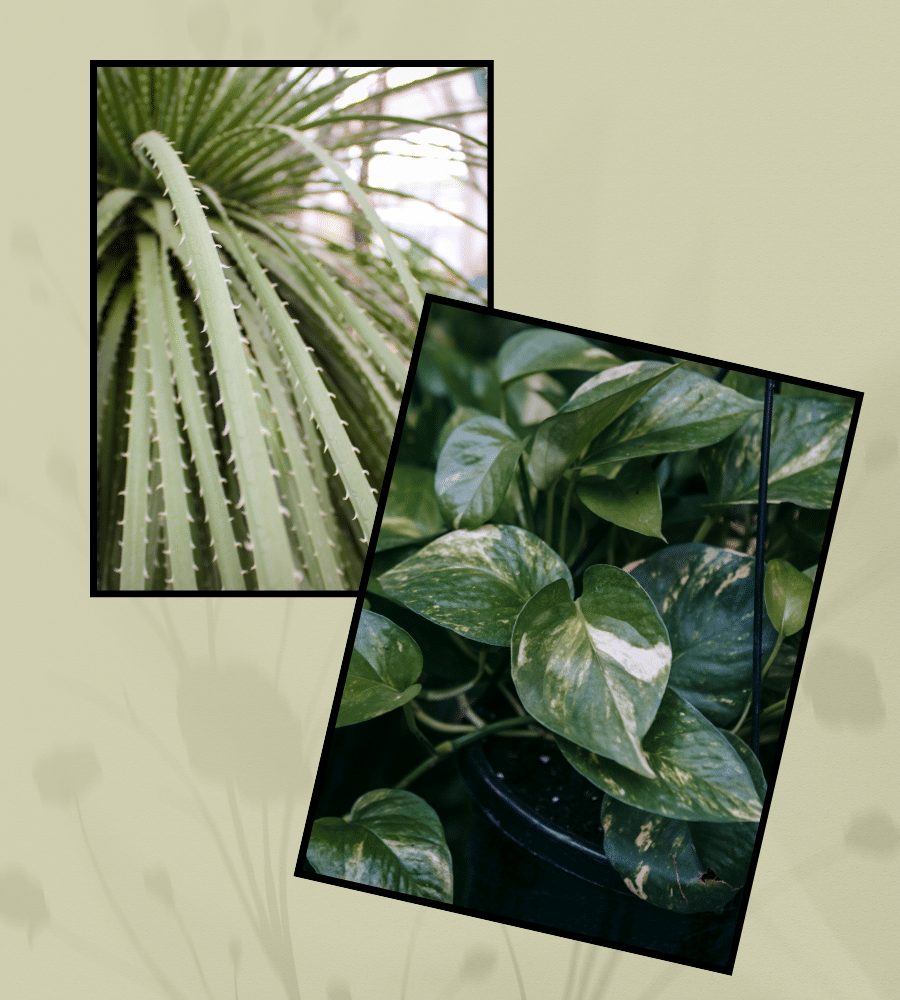
The cactus has narrow leaves ‘armed’ with sharp spikes, and the philodendron is shiny and smooth.
3. Garden Textures for the Senses
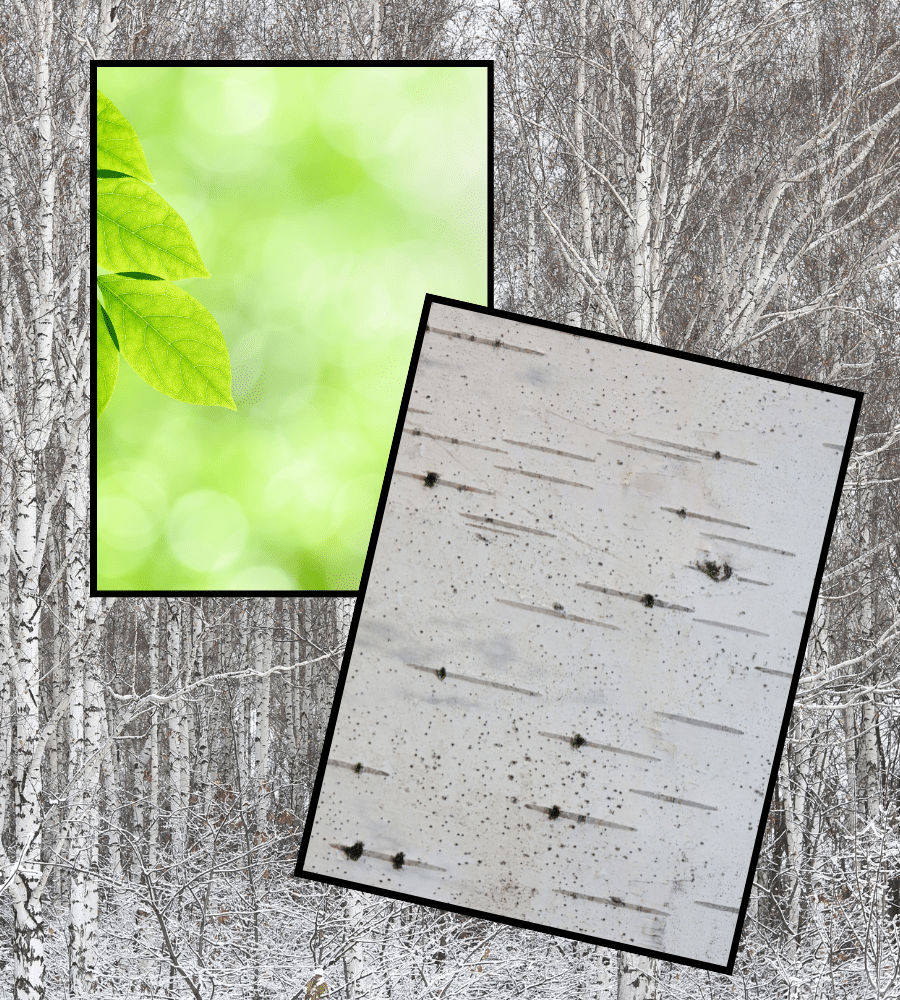
This contrast shows delicate pastel green, new foliage and one of our favorite winter elements the peeling bark of the birch tree.
4. Include the Garden’s Environment
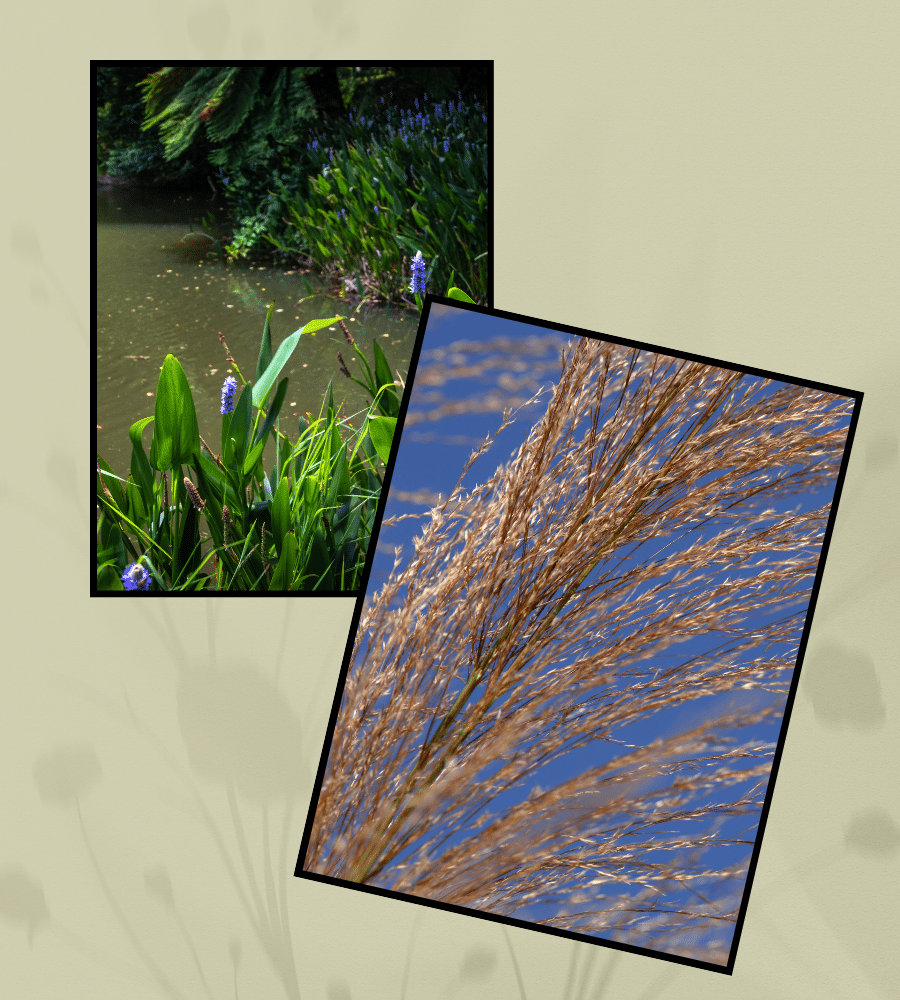
Don’t overlook the environment around your garden. Water features of any size or wind blowing tall grasses or any feathery element will add to the feeling of texture.
5. Texture Improves Biodiversity
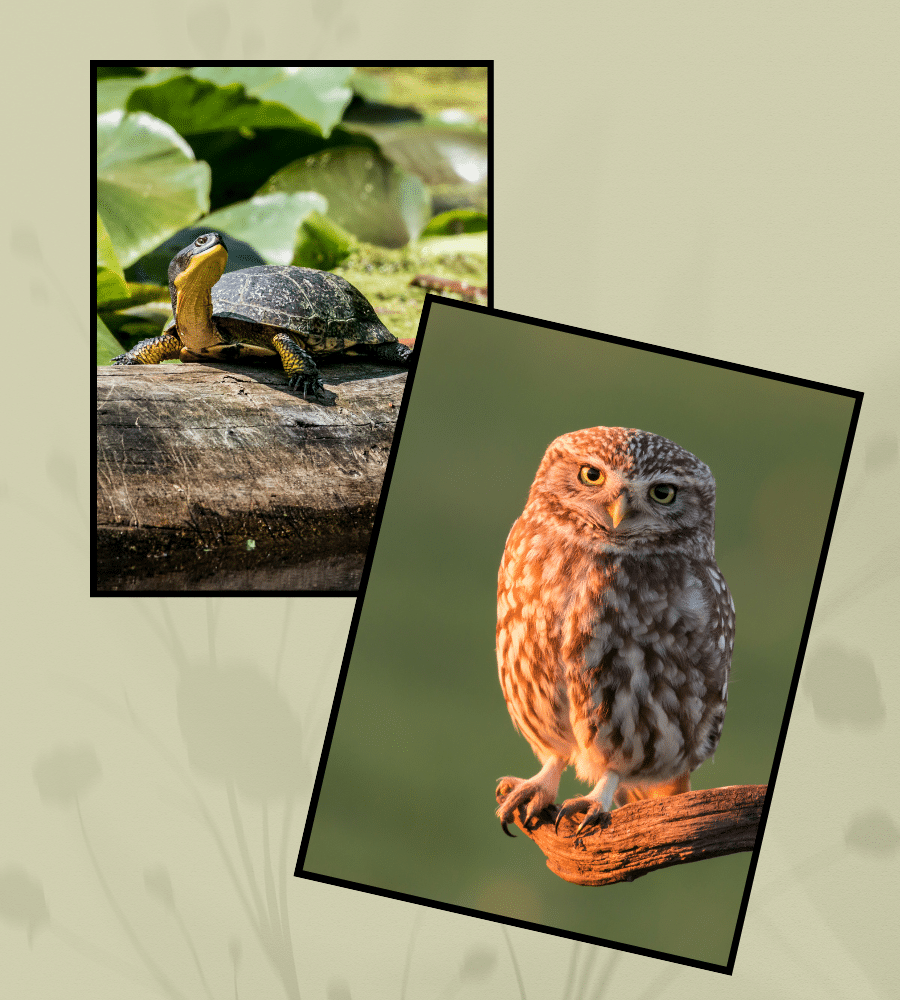
By increasing the texture of plants we increase the variety which allows the plants to host more kinds of wildlife. Ans we will enjoy them around the garden each day.
Here is a good article about texture, including, line, shape and form in the landscape.
How to Increase Texture in the Garden
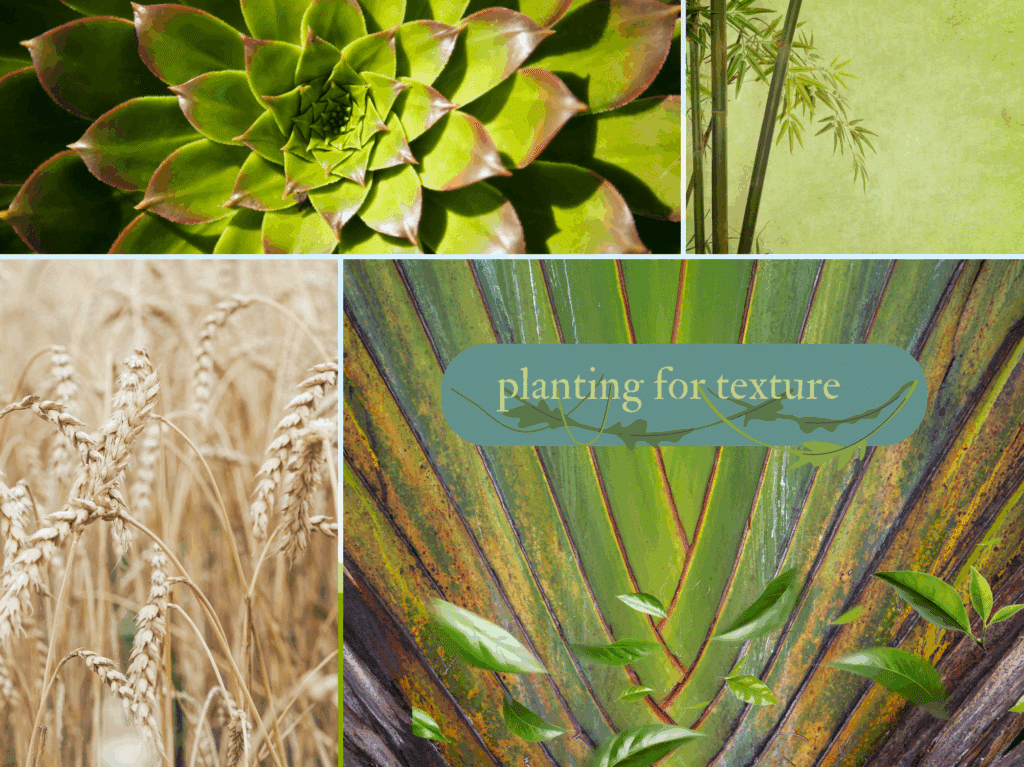
Increase the texture in your garden plants to create more visual interest and a dynamic landscape in your space. Try these strategies to help you enhance texture.
Combine plants with different leaf shapes and sizes. Soft, feathery ferns juxtapose beautifully with the broad, bold leaves of hostas or elephant ears.
Diverse Plant Selection:
- When selecting plants include contrasting foliage characteristics. For example, pair broad leaves with more angular and narrow foliage. Consider grasses, ferns, succulents, woody plants with unusual bark. This will help you create a tapestry of form.
Think of each plant as a design element with its own “architectural” identity. Incorporate geometric forms through succulents like agave or echeveria, and pair these with plants featuring naturally flowing curves like deciduous shrubs. The contrast between a rigid, sculptural form and a wild, undulating leaf edge adds an extra layer of visual interest.
Plant in Layers
- Vary plant height and growth habits. Create layers, both high and low and from front to back. In general, it is best to place the larger, bolder textures in the front and plant toward the back in progressively more delicate varieties.
- An advanced technique used in some gardens is to use open, fine and airy plants in the very front so that you look beyond them to the bold plantings.
Seasonal Variation:
- Look for plants that are deciduous, when their blooming parts are finished in winter you see their bare structures. You can combine these with evergreens for their always consistent texture
Focal Points and Accents:
- Use a single plant or a small group as a focal point to anchor the design. Plants with dramatic textures, such as those with intricate leaves or an unusual silhouette, can act as anchors around which to build the rest of your garden’s texture. Accents such as boulders, mulch, or even decorative elements (like a textured garden sculpture) can further enhance this effect.
Pruning and Maintenance:
- Regular pruning not only keeps plants healthy but can also accentuate their natural textures. By removing dead or overcrowded growth, you allow the plant’s inherent structure to shine through. Thoughtful trimming can help maintain a balance between lush and airy textures throughout your garden.
Summary,

These strategies not only boost the tactile and visual qualities of your garden but also create a multi-dimensional landscape that feels engaging and organic. The key is to experiment with different species, and arrangements until you achieve the feeling you want.
Do you include plans for texture in your gardening now or will you try it out in the future? If so what techniques or plants will you include? Let me know below.
